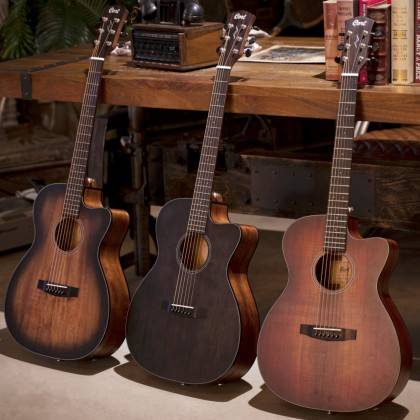
Humans started playing stringed instruments like guitars 4,500 years ago. ‘Ravanahatha’ is the oldest instrument of the string family. The first guitar ‘Vihuela’ originated in Spain during the 15th century. Since then, the evolving process has started in the world of guitar. The evolution of Spanish guitars started nearly from 1790, and the flat top modern guitar stepped into that world two centuries after.
Nowadays, different types of guitars and their several variations are available. The acoustic, electric, and acoustic-electric guitars – are the 3 basic types. They also have near 5-7 variations, and each type has emphasized some special areas. So, the guitar enthusiasts classify them as different types of guitar. Bass guitar is also an important type that contains all three basic types.
But, to clear up the confusion, we're going to describe every type of modern guitar with its variations one by one. We’ve also added some purchasing tips for each area. We’ll start with three basic types.
1. GUITAR
In this section, we’ll discuss the basic three types of guitars and their variations.
1.2 THREE BASIC TYPES OF GUITAR
Acoustic guitar
An acoustic guitar is similar to the Spanish guitar that generates sound vibrating the metal strings. It acoustically amplifies the sound of the strings placed above the hollow chamber of the wooden guitar body.
The vibration sounds are louder enough than a traditional guitar that carries through the air over a long distance. So, you don’t need to use electrical amplification while playing an acoustic guitar. Also, many variations of this guitar function like an electric guitar.
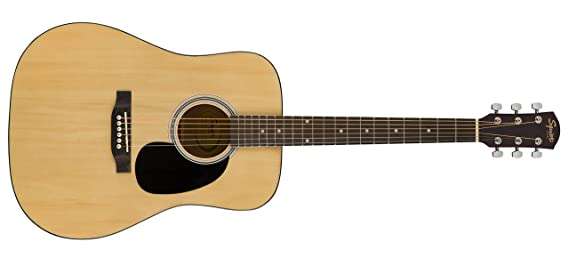
Why should you buy an acoustic guitar?
If you are new in this field, you can start your musical journey with an acoustic guitar. It is perfect for those who are solo performers or practicing at home. Also, if you are looking for some fingerstyle guitars, then acoustic guitar will be the ideal choice.
Electric guitar
Electric guitars are different from acoustic guitars. It produces a mild sound by converting the string vibration sound into electric signals. That means you can’t play an electric guitar without plugging it into an amplifier for getting decent sound.
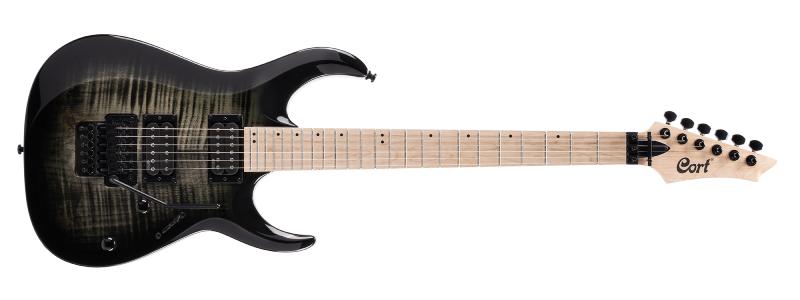
Why should you buy an electric guitar?
The upper frets are easily accessible, the neck is narrow and the strings are quite closer than others. So, beginners can adapt to an electric guitar quickly without hurting their fingers. For them, it is easy to play but sometimes they make mistakes in mastering or tuning the sound through an amplifier.
Acoustic-Electric Guitar
The electro-acoustic guitars are nearly the same as a regular acoustic guitar when unplugged. The best part of this guitar is - it has an onboard electronic sound pick-up and preamp system. Pick-up is a microphone that lets you make the sound louder by plugging the guitar into a PA system or an amplifier.
The pickup converts the sound of string vibration into electronic signals and the preamp (amplifiers, EQ, and volume control options) amplifies the sound. There is also an audio capturing device like an audio interface that allows you to record the guitar’s sound directly.
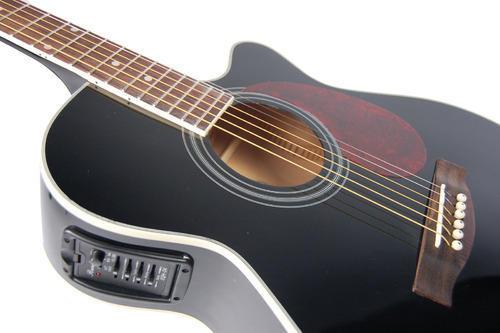
Why should you buy an acoustic-electric guitar?
The onboard electronic pickup, recording equipment, built-in tuner, and sound effect pedals are helpful for the band guitarists. Live performers always prefer an electro-acoustic guitar as it comes with a simple plugging and playing system. This guitar enables them to move around the stage during the live concert. Whereas to turn up a regular acoustic or electric guitar, you need to place an external sound pickup system close to their sound holes that reduce flexibility.
Plus, the musicians can use the looper pedal with this guitar to create a polyphonic soundscape with amazing looped melodies. The device instantly records the live musical performance and plays it back in real-time. Moreover, the electronic amplification allows you to modify the tone further to the next level with sound effect pedals. It includes multiple digital effects like chorus delay, reverb, and much more.
You can play this guitar like a regular acoustic guitar. Both produce natural sound using the chamber as a soundbox. But, a plugged acoustic-electric guitar is more versatile in terms of producing sound. With this guitar, you can create different types of impressive acoustic tones tweaking guitar EQ and amps EQ. Here, you also don’t need any tuner pedal; the in-built tuner lets you tune the guitar quickly.
Things to consider while buying an acoustic-electric guitar
When you play acoustic-electric guitar through the amplifier, it will not sound the same as you hear when it’s unplugged. The onboard sound-hole pickup doesn’t capture the full spectrum of frequencies; so it sounds flat, tiny, and less natural. And, most beginners commonly make mistakes in this area assuming that plugged amplified sound is just a louder version of the unplugged sound. Moreover, an acoustic-electric guitar costs you more than other types and strictly demands an expensive acoustic amplifier.
2. ACOUSTIC GUITAR
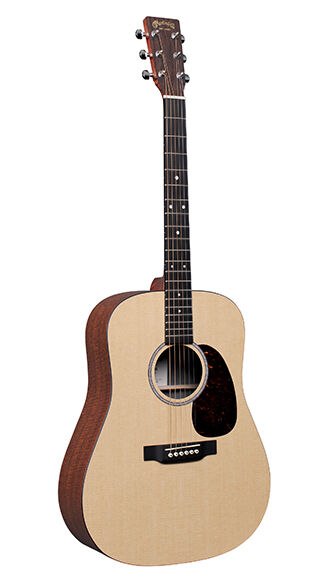
We’ve already mentioned that the acoustic guitar produces sound by vibrating strings. This fretted musical instrument has a hollow wooden body construction with a large soundhole. The hollow-style sound chamber offers amplification and generates a louder tone that travels through the air.
Most acoustic guitars have six strings; some also come with 12-strings. The 12 stringed-guitar doubles each guitar string with an extra similar-sounding string to create rich chorus effects. Every guitar string has a different thickness. The first one is the thinnest, and the sixth string has the most thickness.
The acoustic guitar is the older version of the standard electric guitar. But, it typically has a flat and wide neck and places the strings far apart from each other. So, you need to train yourself properly about shaping the chords and mastering the strumming patterns.
However, it doesn’t provide such versatility as an acoustic-electric guitar. It limits its’ volume potential, rather the acoustic tone cannot be changed using an amplifier or modified adding sound effects.
We’ve already mentioned that the acoustic guitar produces sound by vibrating strings. This fretted musical instrument has a hollow wooden body construction with a large sound hole. The hollow-style sound chamber offers amplification and generates a louder tone that travels through the air. An acoustic guitar with a thin body can give you good results in both tone quality and playability.
Traditionally, guitars have 6 strings. This allows for a wider enough range of notes to be able to play the majority of songs whilst being manageable for the player. With an 8 string guitar, you literally have two extra strings at your disposal and a much wider range of notes and tones that you can use. The 12 string-guitars doubles each guitar string with an extra similar-sounding string to create rich chorus effects. Every guitar string has a different thickness. The first one is the thinnest, and the sixth string has the most thickness, which .
The acoustic guitar is the older version of the standard electric guitar. But, it typically has a flat and wide neck and places the strings far apart from each other. So, you need to train yourself properly about shaping the chords and mastering the strumming patterns. However, it doesn’t provide such versatility as an acoustic-electric guitar. It limits its’ volume potential, rather the acoustic tone cannot be changed using an amplifier or modified adding sound effects.
2.1 TYPES OF ACOUSTIC GUITAR
Acoustic guitars come with different variations. How the guitars will sound; depend on the body style or size that they have or the strumming and fingerpicking style of the players. So, manufacturers named the variations accordingly. Here, we’re going to familiarize you with some popular acoustic guitars and their specialties
Classic guitar
Classic acoustic guitars have thicker nylon strings. It generally gets used for classical music for its soft melody sound. The classic guitar is much less harsh on the fingers than other metal-stringed acoustic guitars and also produces loud, clear, and glassy sound.
Good for: Classical or Soft Music players.
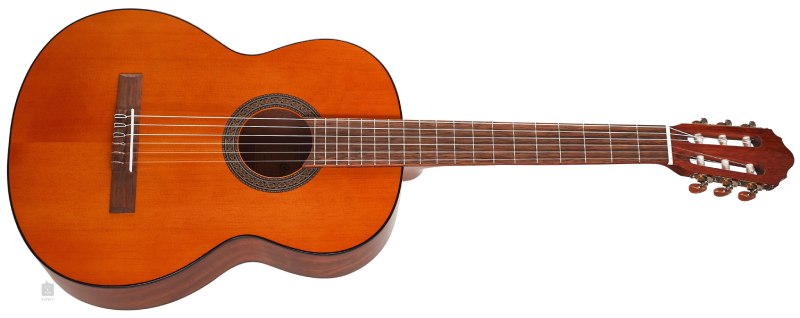
Dreadnought
This acoustic guitar is widely popular among all contemporary acoustic types. The dreadnought cutaway is perfect for the learns to start with; that has easy body styles, loudest volume, and strong bass frequencies. The wide and powerful tones are well suited for the band guitarists. If you are looking for a guitar to play bluegrass music or similar genres, the 20” Dreadnought will be the best for you.
Good for: Classical or Soft Music players.
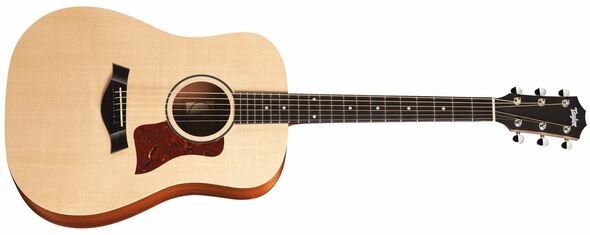
Auditorium
The Taylor shape ‘Grand Auditorium’ acoustic guitar is wider and having a narrower waist than Martin-style dreadnought guitars. It provides a balanced tone for low, mid, and treble range frequencies with well-defined volume.
Good for: Pickers and Strummers.
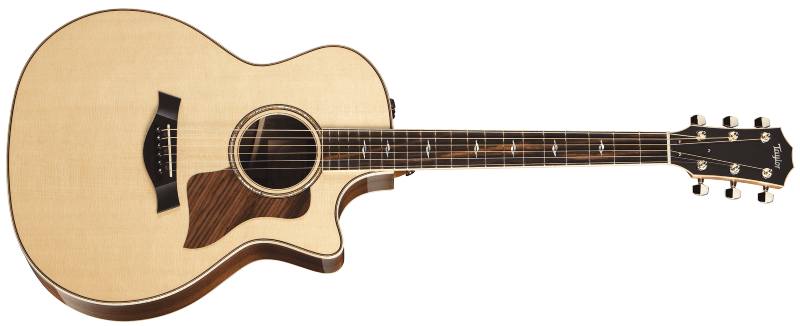
Jumbo
Jumbo is the most popular bigger shape model of the acoustic guitar world. From hard strumming to soft fingerpicking, it always provides a large and loud sound cavity with a balanced tonal spectrum. Modern guitars provide your desired volume with advanced pick-up and pre-amps, but no one can provide such natural room-filling sound without involving amplifiers. If you ever have listened to Bob Dylan, you’ve already acquainted with Jumbo’s tonal properties.
Good for: Strummers and the Guitarists who want a bigger sound.
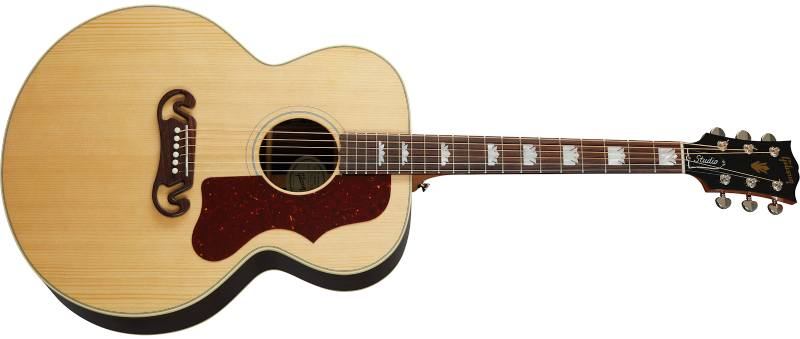
2.2 THINGS TO CONSIDER WHEN BUYING AN ACOUSTIC GUITAR
If you don’t feel comfortable with the instrument you’re practicing with, it’s not possible to learn it, practice it and become pro at it. As a learner, the wrong tonewood choice for your first guitar won’t matter too much. But, we would suggest having a rough sketch regarding the sound you want and choose body size, tonewood, and guitar type accordingly to make it a future-proof investment.
BODY SIZE
With acoustic guitars, you have a couple of options to select according to your needs and preference. For instance, mini acoustic guitars are perfect for travelers; whereas the short-scale 1/2 size Guitar or 3/4-size acoustic guitar would be more appropriate and a good option for small guitarists.
Slightly bigger Auditorium or Jumbo guitars are a great option for country music as they produce balanced sound with decent volume. The 20” sized acoustic guitars like the Dreadnought are also there, which are big but comfortable in size, and shape; also bold in sound.
So, it would be great, if you try your friend’s guitar once before purchasing one. Check how you feel holding it in your hand and how it affects the sound. If you’ve tried playing a full-sized acoustic guitar that causes painful stretching and frequent finger cramps, a guitar for small hands could solve your problems.
TONEWOOD
A perfect tonewood choice can really make differences in sound, build quality, and comfort during practice. Several tonewood choices are there for you, have a look at how they will affect the sound -
STEEL OR NYLON STRINGS
The acoustic guitars mostly use steel strings instead of nylon strings. The nylon-string acoustic guitar is also available that produces melodious sound with strong resonance. If you are a beginner, we would suggest purchasing a Nylon string acoustic guitar as your first guitar as they don’t wear out your fingertips.
But, metal string acoustic guitars have been using widely in bluegrass, folk, rock and country music as it produces the crisp tone and higher volume. For beginners, it can make their long practice session painful. Check here to know more about acoustic Guitar Strings For Beginners.
BUDGET
Budget is the obvious consideration point that everyone considers at first. Many industry-leading guitar manufacturing brands offer budget acoustic guitars with various features and price ranges that can afford most people. Acoustic guitars under 1500 comes under high tier. If you are looking for acoustic guitar on budget, you can try some mid-range acoustic guitars under 300 or under 200.
3. ELECTRIC GUITAR
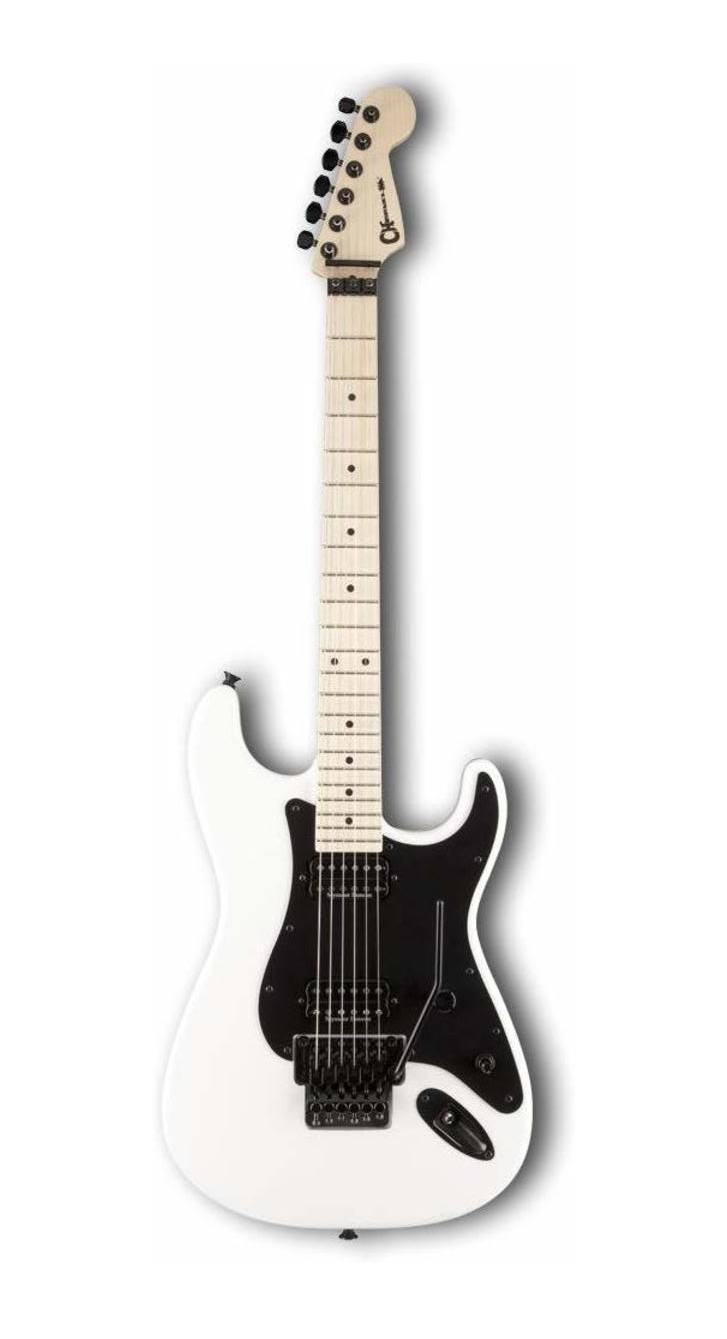
Do you want more sustaining and powerful sounds than the previous one? Are you feeling that you may get stuck between the limited tones of acoustic guitar? Then shift your choice toward an electric guitar which will open up the world of sound effect pedals to create limitless guitar tones and sounds.
Like the previous guitar, most guitars have six guitar strings and a solid-bodied design; but they are thinner than acoustic guitars. If you are interested in playing music on an extended-range guitar, try a 7-string guitar first. The 12 stringed hollow or semi-hollow guitars are also there in the world of electronic guitars.
An electric guitar produces sound with electromagnetism techniques. The metal strings are like dynamos that get magnetized while players vibrate the guitar strings and pass a small amount of electric current flow toward the pick-up system.
It attaches the pickup with the amplifier; which boosts up the small amount of electric current and moves forward to the loudspeaker to deliver the sound.
The electric guitar produces ground-shaking sound, but to make it audible you need to install pickups and an amp (Amplifier and speaker) with this guitar to create sounds. Some guitars feature battery-operated active pickups, and an in-built preamp to shape the sound.
3.1 TYPES OF ELECTRIC GUITAR
Different types of electric guitars are available that come in varieties shapes and sizes, also caters to different musical genres. Fender Stratocaster, Fender Telecaster, and Gibson Les Paul are the most iconic models of electric guitar.
Stratocaster
The Stratocaster is the most popular electric guitar among all. It has already set the benchmark with its great effect in several genres like folk, rock, pop, country, blues, and much more. With this tremolo-picking guitar, you can rise up or low down the pitch. But, it may tend to make your guitar out of tune during pitch changing. Many professional guitarists adore its’ classic mid-range tonal properties.
Good for: a variety of genres, especially for Blues players.

SuperStart
Super start electric guitars use higher-output pickups than others; which makes the model perfect for the guitarists who play hard rock and heavy metal. It uses an advanced tremolo system that offers a decent range of movement. The tremolo picker has great tuning integrity to eliminate the chance of being out of tune during pitch changing.
Good for: Hard Rock Players.

Telecaster
Telecaster electric guitar shows pretty versatility in varieties of genres; but, it gets widely used in country songs. It generates clear and loud mid-range sound and sometimes nasal tones with a high-end response. The glazed high-end response attracts all guitarists, even those who are not associated with the country genre. You can get an idea about its stereotypical tonal properties from the country songs of the pre 80’s century.
Good for: Country music, and varieties of rock.

Offset
Offset body-style electric guitar includes the specialties of ‘Jaguar’, ‘Mustang’, and ‘Jazz master’. The treble-heavy, mid and low-end electric guitar produces ‘jangly’ or clear and bright sound. In the 90’s century, much popular grunge or shoe-gaze brands adopted Fender’s offset electric guitars for its’ incredible clear sound and affordable price.
Good for: Guitarists who need a lot of effects and fuzz.
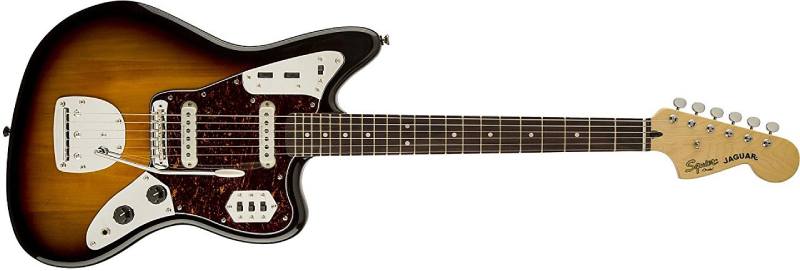
Les Paul
Most Les Paul guitars have expensive mahogany or maple-built bodies and rosewood or ebony wood fingerboards. It provides the same clear and powerful tone as a jazz guitar and also comes with a high-end pickup. Jazz and rock players would like to have Les Paul for its’ superb crispy high-end sound pickup ability and balanced response.
Good for: Jazz and various rock songs.
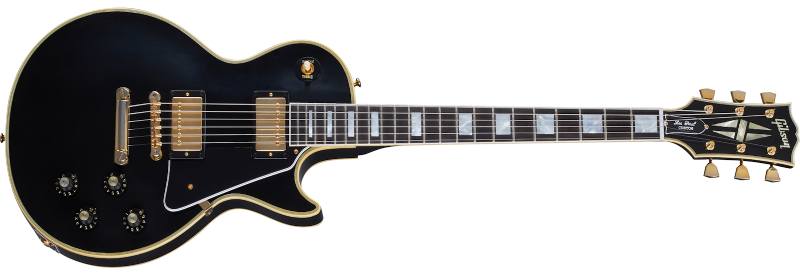
SG - Flying V
The SG and Flying V are also solid body electric guitars that come with dual humbucker pickups. They respond and feel in hand similarly to the previous electric model. These two electric guitars also cater great for rock and metal guitar tone players. Both models are similar in look. Though, some guitarists complained about Flying V that they feel less comfortable. But, the fact is Flying V technically has a better upper neck accessing design.
Good for: Any genre, excluding country.
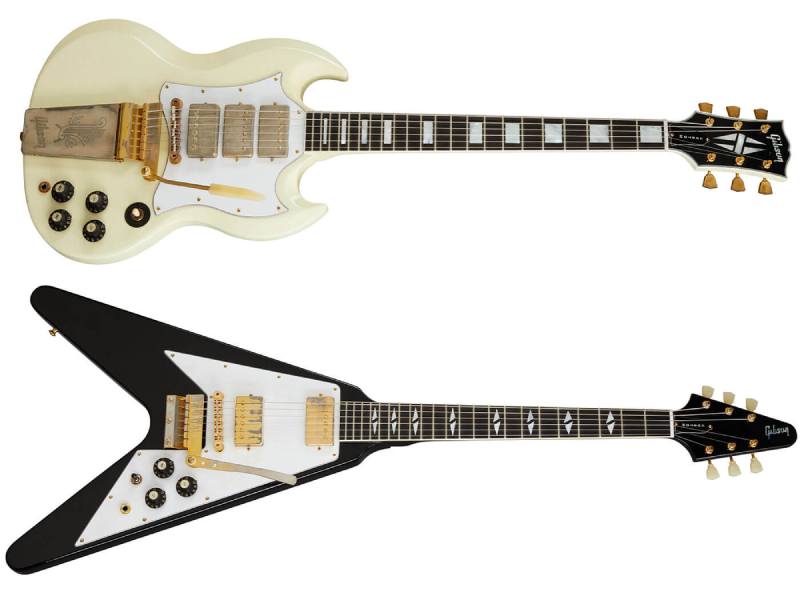
3.2 THINGS TO CONSIDER WHEN BUYING AN ELECTRIC GUITAR
Budget
Many popular brands like Yamaha, Fender, etc start producing quality electric guitars in the entry-level category. These guitars come in an affordable price range; also cater to different styles and genres. The Bullet Mustang HH model of Fender comes under only $200; has already earned lots of positive feedback.
Take a look at these articles to find the best electric guitar under your budget,
Body Types
Electric guitars come with three types of body design - solid, hollow, and semi-hollow. The hollow-body models produce much better resonance than the solid-body types. The Hollow body models generate deep bass and rich tones like an acoustic guitar, so jazz players always prefer hollow-bodied electric guitar. Semi-hollow guitars add more sustain and stability.
It also works well in a variety of genres, especially in blues and jazz. Besides owning enough comfort, consider how it is affecting the sound and check whether the tone suits your demand or not.
Tonewoods
Most guitar players would like to have a basswood or mahogany-bodied guitar. Maple-built neck for Strats or Telecasters is much more preferable. The best combination for an electronic guitar is – a maple-built cap, mahogany-built neck, and rosewood-built fretboard.
Pickups and Electronics
Single coiled and dual coiled (Humbucking pickup) – these two types of pickup are available for electric guitars. Single coil pickup picks bright and crispy sound; while, humbucker picks warm sound.
Guitarists can also combine them and name the pickup system using the first letter of the pick-up type. Like, a Stratocaster- HSS means a classic Stratocaster electric guitar with one humbucker and two single-coil pickups systems. The SSS or HSS pickup systems work efficiently.
Before purchasing an electronic guitar, one must check about its pickup, and onboard electronic systems. Capacitor, phase cancellation, coil splitting, parallel switching, and potentiometers are the most necessary electronics that the guitar should have.
Bridges and Tailpieces
The hardtail fixed bridges and a simply designed stop tailpiece are perfect for beginners; that is easy to set up and re-string. Tune-O-Matic bridges are also popular; while, Les Paul guitars often use these fixed bridges. Generally, most metal guitarists use different kinds of tremolo bridges. Locking tremolos and vibrato tailpieces can hold the strings tightly in place.
But, it may include tension issues while changing the tuning. If you are looking for a guitar for the country genre, the trapeze tailpiece is much more suitable for you because it provides more resonance in the strings.
Scale Length
Scale length refers to the distance between nuts and saddles. The Stratocaster or Telecaster represents longer 25.55” scaled electric guitars, while the SG or Les Paul has a shorter 24.75” scale length. A longer scale produces a brighter tone; it requires high tension in the strings to do so.
4. BASS GUITAR
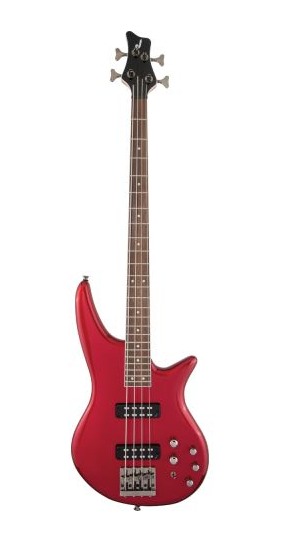
Bass guitar resembles the previous guitars; but, it has unique playing techniques and sounds. It has solid-bodied construction like an electric guitar; but, it offers powerful bass tones like acoustic and semi-acoustic guitars.
Generally, the standard bass guitars feature four strings; some also come with five-six guitar strings. The additional strings provide a more low-end tonal range. Bass guitar is suitable for those band guitarists who hold down the strong low-end groove of the rhythm section with the drummer. The solo performers strictly avoid bass guitars.
With fewer strings, you can rock out more during live performance without having any worry. If you just started playing bass guitar, we would suggest playing four-stringed bass guitars. You also can play a whole range of chords and notes with these four strings.
Usually, music enthusiasts do experiment with five or six-stringed bass guitars. If you want a high to low a wide range of notes or more variations in pitch or tone, you can choose the bass guitars that have maximum strings. But, keep in mind that the guitar neck will also become wider; so, you must have a high accuracy rate. So, you have to do more practice to get accustomed to extra finger stretching.
4.1 TYPES OF BASS GUITAR
Bass guitar emphasizes bass scale; but acts like acoustic, electric, or electric-acoustic guitars. However, it also includes some extra variations, and they are -
Electric Bass Guitar
Electric Bass Guitar simply refers to an electric guitar that emphasizes bass. Generally, electric bass guitars generate low register sounds that human ears are not able to pick up the sound, so it comes with a pickup and preamp system like an electric guitar. So, try to choose electric bass guitar if you will play in a band. Several famous metal and rock bands use four-stringed electric bass guitars.

Acoustic Bass Guitar
Acoustic Bass Guitar is also like an acoustic guitar. It generates loud bass sound and does not demand amplification. Some guitarists, specifically those who are learning bass guitar prefer acoustic bass guitars. Acoustic Bass Guitar is ideal for practicing solo at home, also cheaper and less complicated than electric bass guitars.
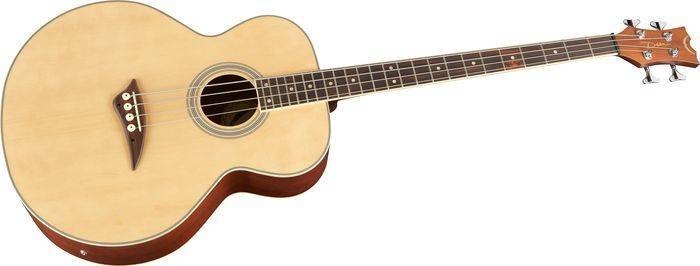
Acoustic-electric Bass Guitar
You can do acoustic gigs easily using an acoustic-electric bass guitar without hurting your fingers. Here, you don't have to do struggle enough to boost up the guitar sound. Plus, the onboard electronics will help you to match your output level with other instruments.
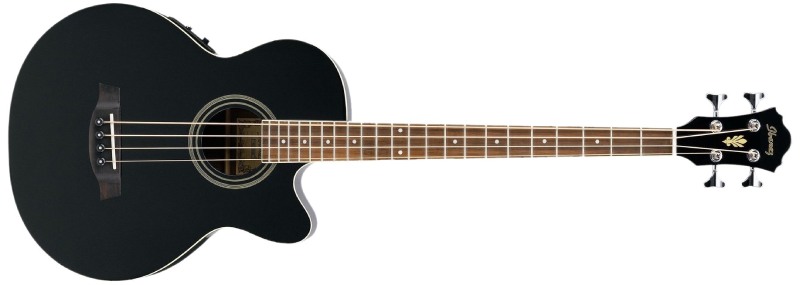
Fretless Bass Guitar
This guitar has no frets on the fretboard. It accurately split up the notes on every string while pressing it down. Each guitar string lets the players know whether they are in tune or not. Generally, all traditional fretted guitars have only 12 tones.
But, fretless bass eliminates this limitation and creates more possibilities to play different musical styles. Here, you will get all microtones in between standard notes. But, if you don’t have enough musical experience in bass guitars, try to avoid purchasing fretless as your first bass guitar.

Long Scale Bass Guitar
Long-scale bass guitars are popular enough among bass guitarists. It has a 34” scale length that lets you experiment more.

Short Scale Bass Guitar
Short scale length refers to the 30” – 32” scales of bass guitars. The guitars that have 31” or fewer scale lengths are finger-friendly more. It also has a more compact design, with a shorter neck and less distance between frets. The short scale bass guitars are perfect for players who have smaller hands.
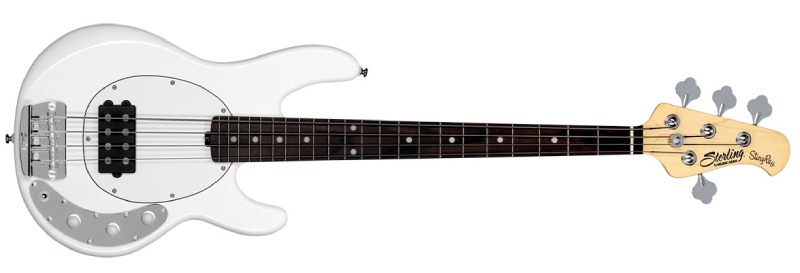
Stand Up Bass Guitar
A stand-up bass guitar is known as the double bass. It is the lowest-pitched stringed instrument of the violin family. It has four guitar strings and a similar structure to the cello; but, the narrow chamber bass sound is lower than the cello. Without the neck, the body of the double bass itself is around 4.5 feet to 3.8 feet.
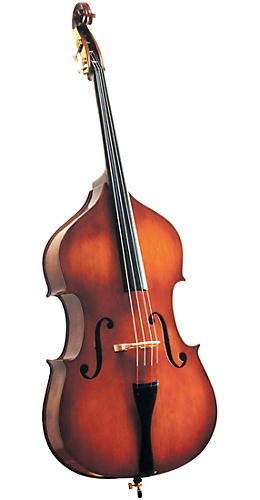
4.2 THINGS TO CONSIDER WHEN BUYING A BASS GUITAR
Budget
You will get a traditional four-string bass guitar for around $200 and the advanced five or six-string bass guitars for around $500. Short-scale bass guitars start from $175 and end up at $2000 with extremely high notes. .However, beginners need to buy an amplifier along with the guitar, that's why they need an extra $170 as well. If you are new in this field and don’t have bass guitar accessories, we would suggest setting your budget for around $500-$1000. Bass guitars worth $1000 are packed with many good, beneficial surprises and have an overall premium design.
Body Types
Before buying any guitars, the thing that comes first is whether you feel comfortable or not holding the guitar in your hand. Like others, it also offers three categories – J bass, P bass, and modern style.
P bass has a compact body design with a single pickup system, and it is easy to play. J bass guitars have a larger body type and feature dual single-coil pickup. The modern-style bass guitars come with a large thick body and humbucking pickup system.
Tonewoods
Most bass guitars have the construction of Ash, Alder, Mahogany, or basswood. Ash provides a bit of a high-end bass tone. Mahogany is perfect for holding up low-end in a gig performance. Basswood and Alder are more versatile and balanced than others. No one is better or worse, purchasing decisions are up to you, choose accordingly what you want to play.
Scale Length
Scale length affects the tonal quality of bass guitars. The standard scale is 34”, 30” – 32” scale length is considered a short scale, 32” – 34” is medium, and 36” is plus-sized scale. The famous Fender Jazz bass guitar has a 34” scale length that most bass players prefer.
5. BEST GUITAR BRANDS
Fender
We all know that some particular models of Fender are vastly popular over the world for their accuracy, playability, and quality. Their Stratocaster and Telecaster series just changed the game and brought them into the limelight. The genuine tone lets you recreate the rock tones of bygone days.
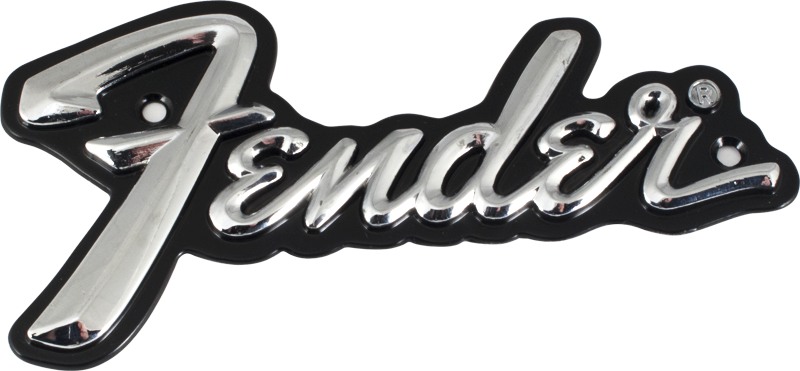
Yamaha
Yamaha started their journey 130 years ago with the piano. In 1940, they introduced their first guitar and now become a multinational conglomerate. Yamaha is a world-famous acoustic guitar band that offers affordable entry-level guitars for beginners.
They offer guitars at an affordable price point that does not mean they compromise with the quality; they can keep their price range low only because of mass production. Yamaha also stepped in the bass guitar production, and it sets a benchmark. The SG2000 is the most popular model of them.

Epiphone
Epiphone is the oldest American instrument maker company that is popular for its archtop acoustic guitars. Besides archtop and semi-hollow models, it offers a range of Gibson guitars at an affordable price range. We would like to recommend Epiphone guitars to those who look for a classy looking basic jazz guitar with a solid body type.

Ibanez
The solid-body guitars of Ibanez are popular all over the world. Jazz musicians adore their hollow and semi-hollow models that are available in lots of styles and price ranges. The JSM10, JSM20, and JSM100 semi-hollow models provide a warm jazz tone. It also can be switched between different genres. Ibanez special half brass nut, half-bone generates a balanced high and low bass. The rigid top and sound block system reduce feedback.
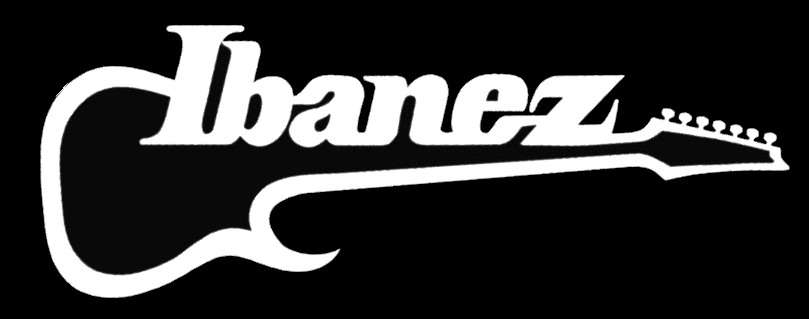
Martin
Martin provides the best quality stringed acoustic and electric acoustic guitars. Martin is the first brand that uses the X-bracing instead of the oldest fan bracing of Spanish guitars. The entry-level guitar of Martin is very suitable for novice guitarists; which, are best for class and finger styles. After Fender, Martin is the only brand that produces a line of solid-bodied electric guitars.
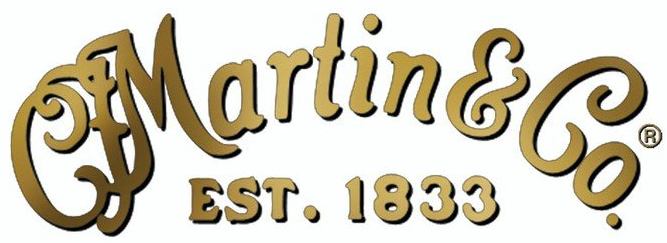
6. GUITAR ACCESSORIES
Guitar Strings
No one can assume when their guitar strings will break. Suppose you are at a show, and how would you feel if the guitar strings tear off during the performance. As a performer, you need to handle such situations tactfully. So, always keep extra guitar strings in your case.
Also, adopt the habit of changing the guitar’s string quickly. So, you have to practice string changing techniques regularly. Moreover, it will help you in keeping the guitar in tune and sounding sharp. Elixir guitar strings are sturdy enough; so, you may not need to change guitar strings frequently.
To ensure its longevity, your guitar will need to be well maintained. It will then have to be cleaned regularly, at least once a year, but not just any old way or with anything! Guitar strings wear out over time. They oxidize and become rough. Before and after each session, it is essential to clean your guitar strings. Personally I use a micro fiber fabric. Before replacing them you can clean them and extend their lifespan.
Guitar Picks
Most guitarists face the common problem of losing out their guitar picks. Just imagine how it feels that you’re searching for your only guitar picks during a lesson or practice session with other band members. So, try to have some extra guitar picks in your instrument bag. My personal choice is Dunlop Jazz III or Dunlop Tortex brand for guitar picks. They offer varieties of guitar picks with different thicknesses. Grab some of them according to your preference.
One thing also you can do is the use of a pick holder. The Dunlop 5005R guitar picks holder lets you organize your most guitar picks in one place. Now, stick the holder on the back of the headstock of the guitar.
Guitar Straps
If you play guitar in a standing position, a wide guitar strap can reduce the pressure from your shoulder. Most acoustic and electric guitars come with a strap button, where you have to attach the straps with those buttons. We would suggest costly leather straps to heavy acoustic guitar users. If your electric guitar doesn’t carry much weight, you can use nylon or cotton straps.
Guitar Capos
Guitar capos are such ‘must have’ guitar accessories that you always need to keep nearby. The guitar capos will help you clamp down all strings of the guitar over the fretboard. Guitar capos make it easy to match tone while playing guitar with a vocalist.
We know that every person has different vocal ranges; so, sometimes it becomes difficult to synchronize the guitar tones with the vocalist’s preferred scale without changing the chord shapes of your guitar. Guitar Capos are much less expensive; pick the cheapest one and keep in your guitar case to avail yourself of its’ extra advantage in the future.
Guitar Bag/Case
If you don’t protect your brand new guitar, it won’t stay glossy for long. To do so, you must have a quality guitar case or guitar bag to store the guitar when it is not in use. A good guitar case or bag protects your guitar from further damage or scratches, and the attached pockets let you keep your ‘must have’ guitar accessories organized and nearby.
You can easily transport and travel around with the guitar for the shows by securing it into a hard case. Besides having rigid protection outside, quality hard-cases also use fabric material inside the container to prevent scratches. A padded and waterproof guitar bag is the easiest option for keeping the guitar in your closet or carrying around it your shoulder. The padded protection never lets it be scratched or damaged.
Guitar PEdalS
Effects pedals are the color your guitar will wear. Your style, and the genre you play, will be greatly compromised by these. So, defining your style of music is a must before equipping yourself with one or more pedals. Whether it is loop stations , for example the RC300 from Boss or the Ditto Looper from TC Electronic , a wah-wah, reverb, overdrive ,distortion or others, the guitarist will need effect pedals adapted to its use.
We can classify the effects according to 4 types, each grouping together several categories: Effects of saturation, modulation, delay, filters.
- Saturation Pedals: pedals overdrive , distortion pedals , pedals fuzz .
- Modulation Pedals: chorus pedals , flanger pedals, pedals phaser.
- Delay Pedals: delay pedals or delay or echo, pedals reverb.
- Pedals filter pedal: wah , pedal equalizer or equalizer or EQ, envelope filter pedals.
We also find different effects for bass guitar, pedals that do not modify the signal: this is the case of looper pedals (loop pedal), volume pedals , switcher pedal (AB box), bass effect pedals and much more.
Guitar Humidifier
You probably know that temperature and humidity can have a big impact on wood. Guitars are made of wood and can sometimes be damaged when their wood dries out too much. This is especially true for acoustic guitars, as their fragile woods can warp and crack under very poor conditions.
This is one of the reasons that many music stores have a separate, waterproof room for their acoustic instruments, where they can maintain strict temperature control. But what happens when you bring your guitar home? One way to keep your guitar wood in good condition after purchase is to use a guitar humidifier.
These are small, inexpensive devices that fit perfectly into your guitar case and work when your guitar is not being played. Guitar humidifiers are especially important in climates that get very dry during certain seasons of the year.
Guitar speakers
When we vibrate metal strings in front of the pickups of an electric guitar, we generate a very low current. This current then passes through a preamp, then it goes through a power amplifier, which is responsible for further strengthening the intensity of the electric current.
But in order for us to hear music coming out of our amps, we still have to convert all this electricity into acoustic energy! This is where the speakers and guitar cabinets come into picture. The membrane of guitar cabinets generates sound by moving the air, according to the variations of the current.
The market is saturated with a large number of high quality speakers of various sizes, ranging from 2 inch practice speakers to large 15 inch tube amps. But if you are a beginner we would suggest you to go for an 10 inch speaker. Among the speaker set, the 10 inch guitar speakers can be very useful and versatile. On small stages they seem to shine as they are able to play quality sound as they are less powerful and less distorted, unlike the 12 inch ones.
Since the speakers are slightly smaller, the corresponding output level is lower. The cone is thinner and with a more intense vibration, they generate a more detailed and clearer output. Also, for hobbyists, it can be very beneficial for your workouts as the 10 inch speakers will not create a noise nuisance or wake up other locals in the neighborhood during your night sessions.
Apart from the accessories we mentioned here, there you can also find guitar wall hanger, strap locks, bottleneck, guitar stand, guitar tools, microphone and few other optional guitar accessories. Each accessory brings a notable benefit for the musician. They make their life easier, secure their instrument and are also customizable.
CONCLUSION
The world of guitar revolves around lots of guitar types and variations to cover a wide span of genres. Most enthusiasts get confused looking at these expanded guitar collections. That’s why we’ve decided to help you in taking your first step in the guitar world. Hoping you’ve got a clear overview of this topic. If you still want to know something in detail, let us know. We’ll try to cover the topic in detail in our next article.
FAQ
1. What is the difference between a bass guitar and a regular guitar?
The bass guitars are slightly larger and easier to play than the standard acoustic or electric guitar; but, its’ sounds are an octave lower. That’s why we always use a bass guitar during band performances as a supporting instrument.
2. Which is better: Electric guitar or Acoustic?
The electric guitar is undoubtedly more comfortable to play than the acoustic guitars. But, novice guitarists may find it hard to master the tone through an amplifier. On the other hand, you need more practice to set your hand and finger properly with the acoustic guitar. So, we would suggest electric guitar to the learner and acoustic guitars to those who want rich sound without amplification.
3. What is the standard guitar scale length?
There is no rule of choosing scale length; it depends on your preference and the brands. Different brands set different standard scale lengths for their guitar models. For instance, Fender sets 25.5” for most of their models, and Gibson models come with a 24.75” scale length.















